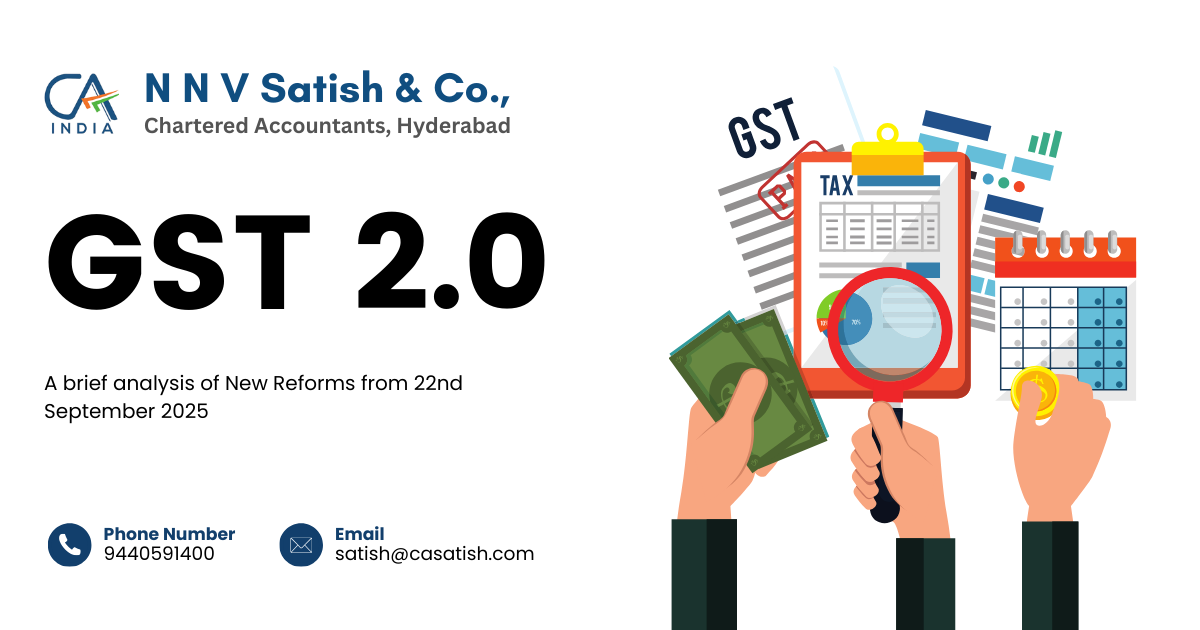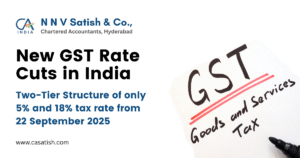India has taken a bold step in overhauling its indirect tax system with the launch of GST 2.0 on 22nd September 2025. These reforms are designed to simplify the tax structure, reduce the burden on consumers, and improve compliance for businesses. Whether you are a household shopper, a small business owner, or an entrepreneur, the new GST regime will directly affect you.
Key Highlights of GST 2.0
1. Simplified GST Structure
The earlier multiple tax slabs have been streamlined. Now, most goods and services fall under just two main categories – 5% and 18%. A special 40% slab has been introduced for luxury and sin goods such as tobacco and alcohol.
2. Relief on Daily Essentials
Everyday consumer goods such as soaps, packaged foods, toiletries, and dairy items are now taxed at lower rates. Medicines, healthcare items, and diagnostic kits have also seen significant reductions, making healthcare more affordable.
3. Electronics and Automobiles Get Cheaper
Large consumer electronics, home appliances, and even automobiles have moved to lower GST brackets. Televisions, refrigerators, and air conditioners will cost less, while two-wheelers and small cars benefit from reduced rates, encouraging demand in these sectors.
4. Insurance Sector Reforms
Life and health insurance policies have been made GST-exempt, a huge relief for policyholders. However, insurers will no longer be able to claim input tax credit (ITC) on commissions for individual policies, which could impact their cost structures.
What Becomes Costlier
Not all items are getting cheaper. Luxury products and sin goods now fall under the 40% slab, making them more expensive. Similarly, certain high-value apparel may also see a shift into higher GST brackets.
Impact on Consumers
For households, these reforms are largely positive. From grocery bills to healthcare costs, many essentials are now more affordable. Electronics and automobiles, which were earlier considered high-tax items, will also see noticeable price drops, especially during the upcoming festive season.
Impact on Businesses
Businesses will need to update their billing systems, ERP software, and compliance processes to match the new tax structure. Companies dealing in FMCG, electronics, and automobiles are expected to see an increase in demand. Insurance firms, however, will have to adjust to the loss of ITC benefits on commissions.
Economic Outlook
The reforms are expected to boost consumption by putting more money in the hands of consumers. While the government may experience a short-term dip in tax revenue due to lower rates, the broader economic activity is expected to balance it out. Over time, GST 2.0 is likely to improve compliance, widen the tax base, and contribute to steady economic growth.
GST 2.0 marks a new chapter in India’s taxation system. With lower rates on essentials, simplified tax slabs, and reforms in key sectors like insurance and automobiles, the new system is designed to benefit both consumers and businesses. For individuals, this means lower costs of living; for businesses, it means better growth opportunities. Staying updated with these changes is essential to make the most of this reform.




